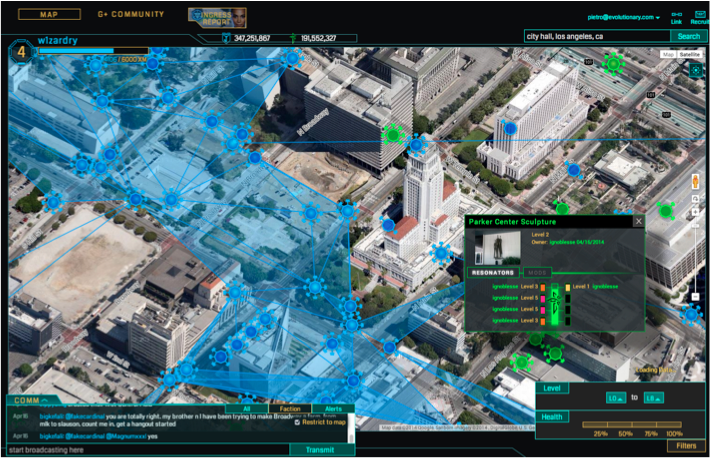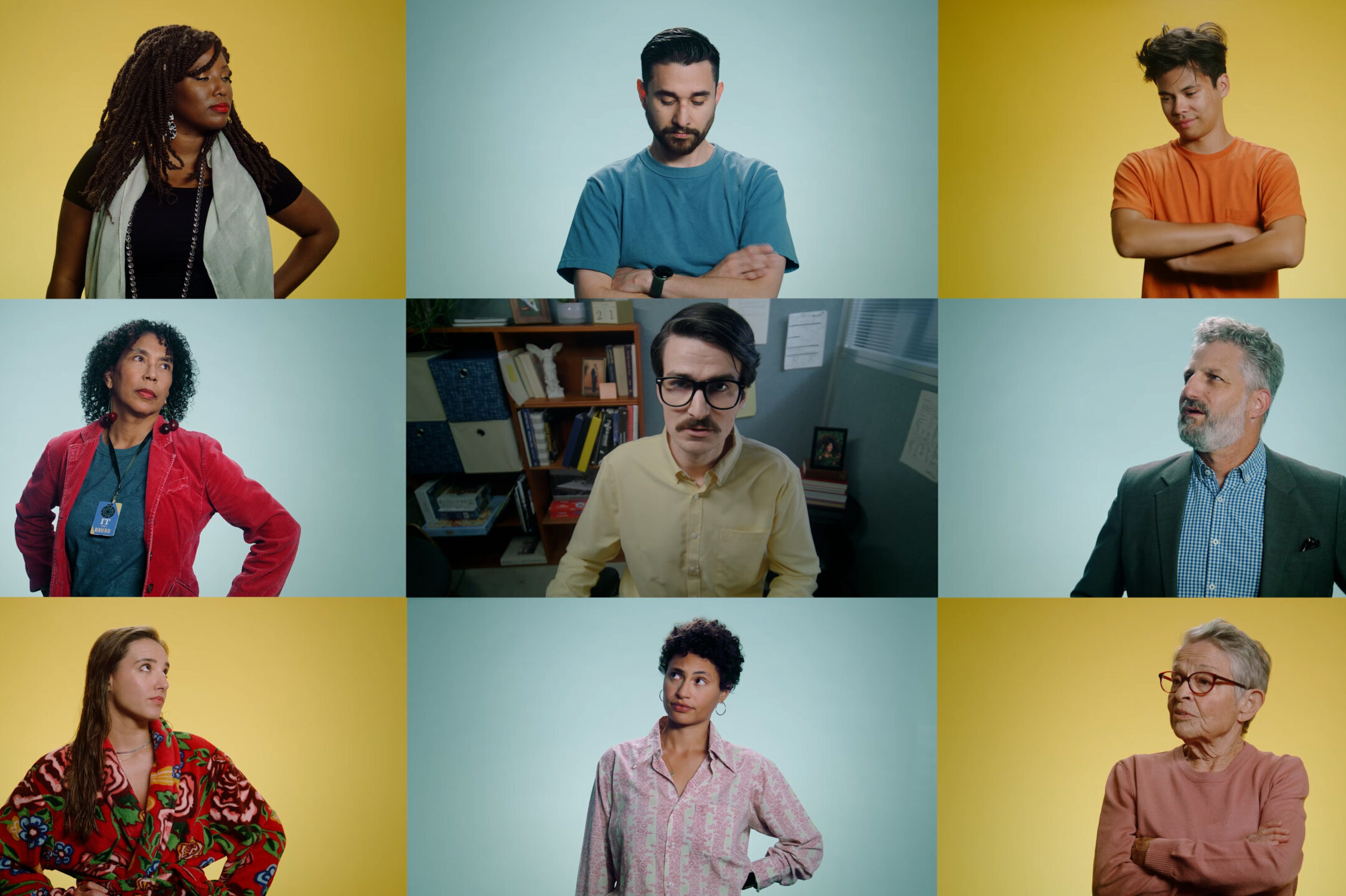Originally posted on Medium.
Smart mayors will enrich the next version of 311 by augmented reality
In the 2007 best-seller “Spook Country,” William Gibson foresaw “the locative”: virtual fantasies layered over the real-world grid, visible to anyone with the right geo-aware gear. In the book, the charismatic Bobby Chombo is the only guy around with the technical chops needed to make the locative work. So when an artist wants to, say, digitally re-create the death of River Phoenix on Sunset Strip, he or she needs Chombo’s help.
Cities are real-world grids: you can see that instantly on a Google map. But it’s not so easy to see the city as a civic entity. The stuff that counts — the interaction between people and city services — is hidden in plain view, invisible to almost everyone. That may be about to change. The opportunity: make it possible for cities to show their work and engage with citizens in a meaningful way, using the existing idea of 311. And make everyone who’s interested a Bobby Chombo.
Today, 311 services in American cities have the potential to become platforms for citizen engagement — places for genuine back-and-forth among people who care about the streets where they live, as well as channels for interaction between citizens and the city. Although 311 is now thought of as the channel for complaining about city services, it could be the true realization of “the locative.” But more in the spirit of Ben Franklin than the quasi-dystopic Gibson.
If you’re already sold on the idea of civic technology, 311 is pretty nifty. New York City’s version, for example, is essentially the landing strip for everything the city does, and the city’s 311 page and app describe themselves as “The Official Website of the City of New York” as well as the city’s “main source of government information and non-emergency services.”
Los Angeles’s version of 311 is at the top of every website across the city (check out lapl.org, lacity.org, lafd.org, etc.). LA is about to launch a new 311 in the next couple of weeks that will connect callers to drivers in sanitation trucks (and vice versa). (Yes, the Internet is for trash — in a good way!)
I celebrate this civic activity. But it’s all quite primitive so far. Plenty of maps filled with plenty of dots characterize this early stage of 311 development, and the notion of citizen-city “co-creation” of information and services is more talked about than real.
311 could be much, much neater. What if Bobby Chombo-like help were available to anyone so that she or he could digitally paint special places in the city with arresting puzzles and and insights that, along the way, were joined to civic information made visible to anyone nearby?
In other words, what if something like Ingress and 311 worked together? The idea of adding playful and hip to earnest and helpful seems like a potentially winning civic combination that could make people look at their cities in new ways.
More than 15 million people around the globe have already downloaded Ingress, which uses a smartphone’s GPS tracking and camera to assist players in opening and claiming “portals” — any interesting place in their city, as long as it is accessible by foot — for their team. The idea is that a mysterious alien energy force, the Shapers, is coming into the world through these portals; you can play for the “Enlightened,” who “embrace the power this energy may bestow upon us,” or the “Resistance,” who want to stop it.
Along the way, though, if you’re at all serious you’ll have to walk dozens of miles to get to many portals — you physically have to be within 90 feet of a portal in order to interact with it. (There are a zillion YouTube videos about Ingress; here’s one in which a user patiently walks through the process with his bored son and not-so-bored dog along for the experience. A Monterey County Weekly reporter, Kera Abraham, recently engagingly documentedher experience leveling-up in Ingress.)
So playing Ingress is a physically-demanding undertaking that gives Google, the host for a startup called Niantic Labs that launched the game, access to (even more) boatloads of data about everything people around the world think is cool in their environments. Millions of people play every day.
When I look at Ingress, I see the next phase of civic interaction — locative back-and-forth. Cities today routinely use the social-network platforms of Web 2.0 (Twitter, Facebook, blogs) as additional channels for communication with constituents, and that conversation is more two-way than it used to be. With fiber and ubiquitous free public WiFi, cities could use augmented reality apps as yet another means of communication: 311 plus all the future flavors of Ingress-like interfaces.
(Without fiber and free WiFi, users will hit data caps from their mobile carriers that will dim their enthusiasm for interaction with truly engaging augmented reality. And there’s certainly going to be itchiness about favoring the Google-supported Ingress as a channel, so 311 data should be open and fed to anyone who promises to send data back to the city. A good early example of this practice: Los Angeles shares data about its construction zones with Waze, also part of Google, in exchange for Waze’s real-time data about traffic patterns and driver experiences.)
Adding a locative element can enhance the civic experience in countless ways, bounded only by imagination. Are you in love with a particular statue in a park or a street crossing? (This is not nuts. In Melbourne, people who love their trees wrote appreciative notes to them when each tree was given an email address.) Use augmented reality to see it reimagined as a living, speaking being, telling you a story about the city. And talk back, complaining about the trash at the statue’s foot or suggesting that the park around that statue be reprogrammed to better serve the neighborhood. Build your own visualization for the next user to see.
Look, making things fun is part of civic purpose. Art and music often come first in the process of revitalizing a dead downtown or cheering up a public space. Mayors want people to think “My city is really cool,” because those people will stay. And that has to be good — people with deepened ties to their cities are more likely to support the bold initiatives that will be needed for metros to thrive in an era of economic dislocation, global warming and ever-narrowing resources.
Augmented reality is going to happen anyway. As long as people are running around celebrating the awesome places in their cities with apps, cities themselves should make clear that they had a lot to do with generating that awesomeness — and that they’re here (really “here”) to stay.
No Bobby Chombo required.


